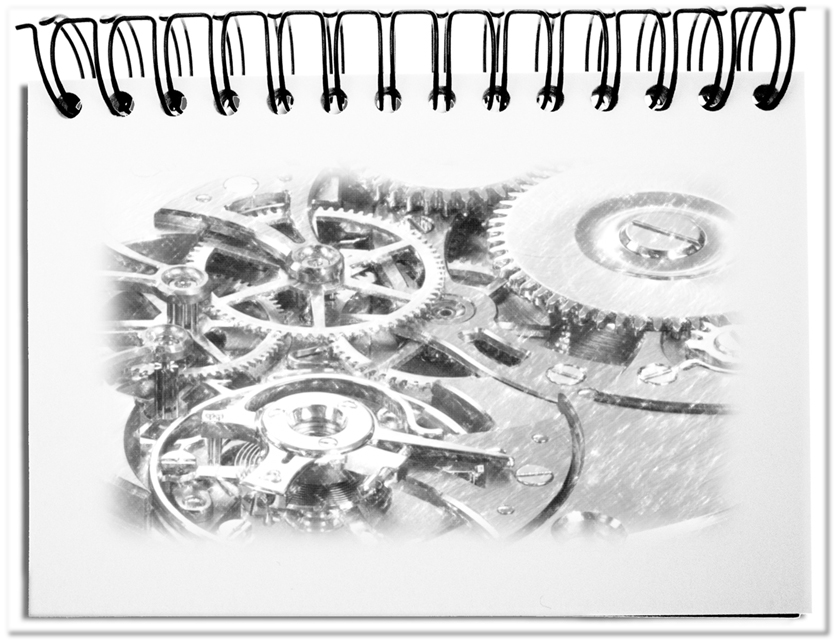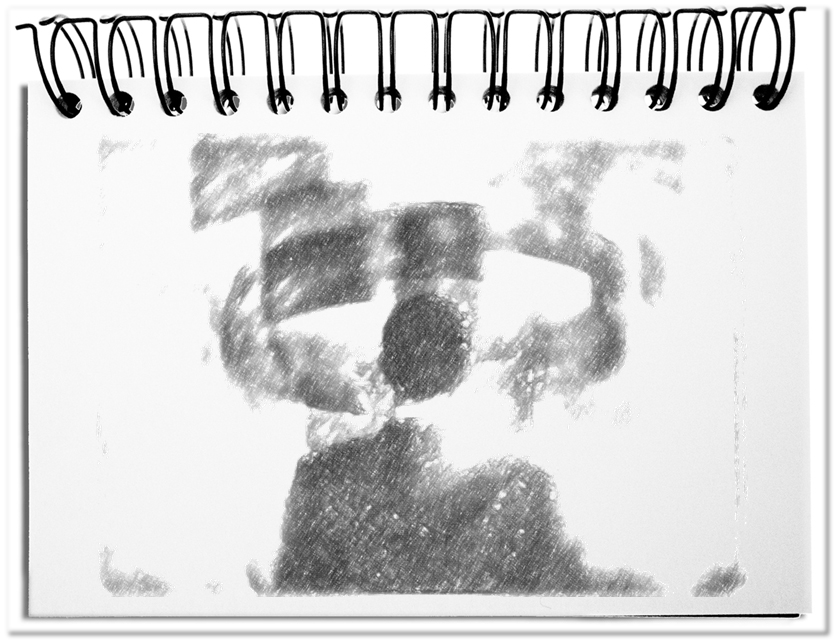Descartes and the enlightment divided the world into parts as small as possible, in order to examine and understand exactly, how it ticks. This world view is still valid. And until today many people only trust on what they can repeatedly prove. Accordingly enterprises divide work into controllable units. These areas, teams and positions get the tasks, authority and responsibility assigned for a small part of the value chain. Together, all parts represent the whole enterprise – for some people like clockworks. If the smallest part is missing, the clock does not tick any longer. That makes the clockwork an ideal metaphor for technical order.
Human-made structure is based on rules, logic and calculations. The following points clarify this thinking.
- Structure
The architecture of a clock is determined by the watchmaker. On various layers the different displays of time, like the respective hours, minutes, seconds, dates or moon phases are implemented through cog wheels of different sizes. The watchmaker recognizes, how it works and in which sequence it can be put apart and be rebuilt by looking at the clockwork.
In the same way the company consists of different areas. The larger the number of areas, the more layers, groupings and fields exist. Due to the limited number of parts, the most difficult clockwork is easier to get going than an enterprise. - Format
The condition of the cog wheels, the screws and the material determine the quality of the clock. Each part has a purpose. In a company, there are likewise tangible components – e.g. the buildings, the pipes and the machines. Some people even consider the employees as tangible resources. For better grasping the soft aspects of people, they are described with forms that regulate the exchange of information and define a common language. Over time these guidelines shape up to the dense jungle of bureaucracy. The regulations are created, described, published and the application ensured without interruption. The clockwork does not have these soft factors. This makes the clockwork to the ideal description for a flawless enterprise driven by leadership. - Leadership
The small flywheel, the balance wheel, is crucial for the even operation of a clock. Accordingly, it takes people in the enterprise, who take over this role. In a technical order the directions run clearly from top to bottom, from outside to inside. Nothing happens, without the superordinate, super-superordinate approval of the superiors. This creates reliable and smooth operational sequences, but it slows down the flexibility of the employees. They always have to obtain permission initially. As the balance wheel ensures the even running of the clock, the leadership takes care that even with time pressure the corporate procedures run reliably. - Key figures
Well adjusted clocks provide the exact time accurately. Further key figures are the caliber, the energy source or the number of beats per second. Also the technical order uses measurable key figures. The activities have clear measuring points, as long as they are tangible. Thus the decisions can be justified, the employee performance evaluated and different scenarios simulated. With growing digitization also the number of measuring points increases. The new abilities of Big DATA are still able to recognize patterns in the flood of information. Eventually not the quantity is crucial, but the reliability. - Collaboration
The clockwork lives of the immaculate interaction of its parts. As soon as sand slips into the clockwork, it stops. The business cooperation in the technical order is regulated. The farther they are from each other, the rarer are direct contacts. Contrary to the clock, where the cooperation takes place inside, the business depends on informal relations of the employees, who unfold rather outside, in the private environment. Cooperation is made more difficult due to the existence of an area specific, separatist secret language that can hardly or not at all be understood by others. For fans of the technical order the clock represents the ideal state of cooperation. - Knowledge
The wisdom of clockwork consists of its design, the mechanical finesse of its parts as well as, of course, and the time. In the enterprise the knowledge is distributed across all levels and ranges. The superordinate levels have thereby a limited view, while the subordinated levels have a limited operational know-how. The rigid structure limits the available knowledge to what was originally inserted into the organization – learning is for this thinking a wrench in the works.
Bottom line: The clockwork is the ideal metaphor for a technical order, as it coins the economy for centuries. The price for this tangible corporate structure is a large number of layers, an overwhelming bureaucratization, a strictly hierarchical chain of command, easily attainable measuring points, a firmly given cooperation and the insufficient use of knowledge and learning.


